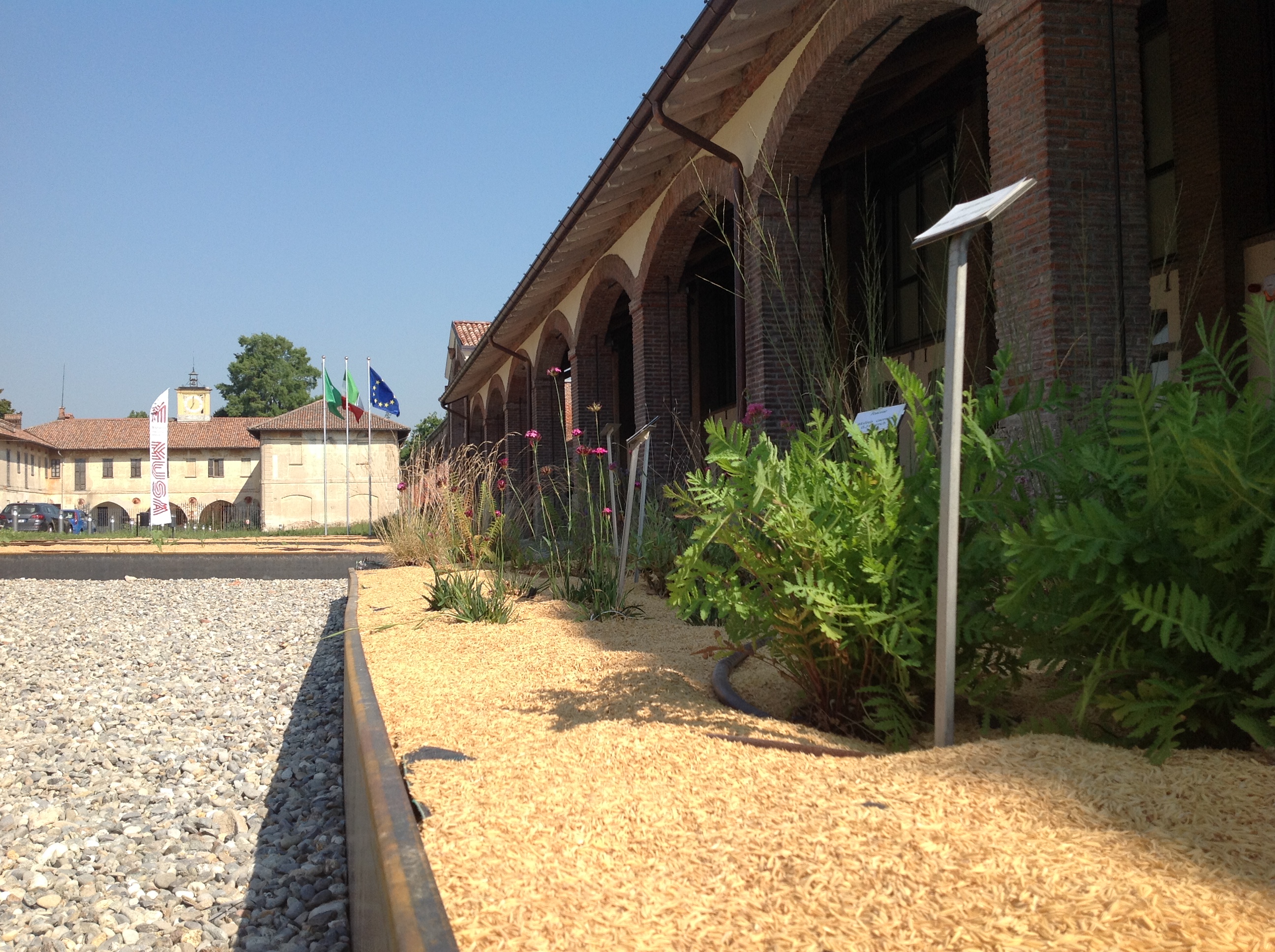
MUSA Salterio Museum – Taste and Ladscape Workshop
This post is also available in:
 Italiano (Italian)
Italiano (Italian)
MUSA, the “Salterio Officina del Gusto e del Paesaggio museum”, is located along the towpath of the Naviglio Grande, 10 kilometres from the centre of Milan. It is located in the former stables of Cascina Salterio and it covers about 598 square yards on the floors (excluding the botanical garden and the porch). The building was built in the second half of the XIX century by Luigi Salterio, owner of the same farmhouse, to revamp and expand his farm. Acquired in 2010 by the Municipality, it was recovered and chosen to house the museum – the works started in 2009.
For some time, in fact, the municipal administration of Zibido had been carrying out a policy of support for the local agricultural system, also focusing on the recovery of architectural and environmental assets, as well as on the enhancement of the rural landscape. Such effort also involved other municipalities in the same area, the Lombardy Region, the South Agricultural Park and private funds. Among the projects eventually carried out, there the MUSA, which translates as the final recovery phase of a property of historical value.
The MUSA is not a museum on the peasant civilization, but a place intended to host various activities. It is intended to enhance agriculture, offer instructional opportunities related to local food and the surrounding landscape, build synergies with Milan and International culture, as well as connect the network of farms and agricultural activities.
MUSA is basically a laboratory where people can really understand the territory and its people, though local tastes and the very surrounding landscape. As a matter of fact, many “food experience” events are regularly held, as well as research and study sessions on the local environment. Instructional and training courses range from primary school pupils to professionals and scholars. MUSA also features a botanical garden, a dedicated library, a laboratory/kitchen, an exhibition space, a multimedia room, and a bike rental service to visit the area.
The botanical garden, in particular, is just an outdoor room-like space, where plants are thoroughly tagged with all their information about names of the species, origins, diffusion, use, and habitats. The garden also teaches horticultural techniques, but also the fundamentals of the Milan agri-food heritage and the cultivation phases of crops around the world.
The museum also preserves the memory of the area. Through the consultation of maps and photographs, and several multimedia experiences, visitors can familiarize themselves with the history of the southern Milan area, and discover the important production of rice and milk. The dedicated library offers a true wealth of information and reference material on these very subjects.
The museum houses an equipped laboratory dedicated to many “food experience” activities, starting from the collection of herbs from the botanical garden. Experimental activities also focus on the discovery of the surrounding landscape with guided visits to the historic water-meadows, the ancient basins of the Naviglio Pavese, and to farmhouses that regularly work with MUSA and are eager to share and reveal their important activities.
In particular, workshops, games, itineraries for the rediscovery of the landscape, and the “exploration of taste” are regularly organized. Visitors can also travel back in time, getting their hands on the old tools that used to be part of any farm: young and old people can thus create objects by using recycled glass, aluminium, paper, fabric, cork, and any other available material or resource.
Throughout the year, courses, events and workshops are regularly organized to learn about the raw materials and the related nutritional aspects. The courses are held by nutritionists and cooks thus sharing and offering comprehensive experiences and knowledge; attendees will thus be able to apply the science of nutrition to the art of cooking.
Thanks to the bike-rental service, visitors can reach Carcana Lakes (6 km), the famous Certosa di Pavia following “Alzaia Naviglio Pavese” southbound (16 km), and Milan’s wet dock (9 km).
These suggested itineraries are not only about culture and nature but also gastronomic ones – many farms along the way, in fact, offer, at the many farms that offer their local products for catering.
This post is also available in:
 Italiano (Italian)
Italiano (Italian)
Contatti
Alzaia Naviglio Pavese 5 - 20080 Zibido San Giacomo(MI)
02 90094089
info@museosalterio.it
Altre info
Sabato e Domenica
dalle 10:00 alle 18:00
